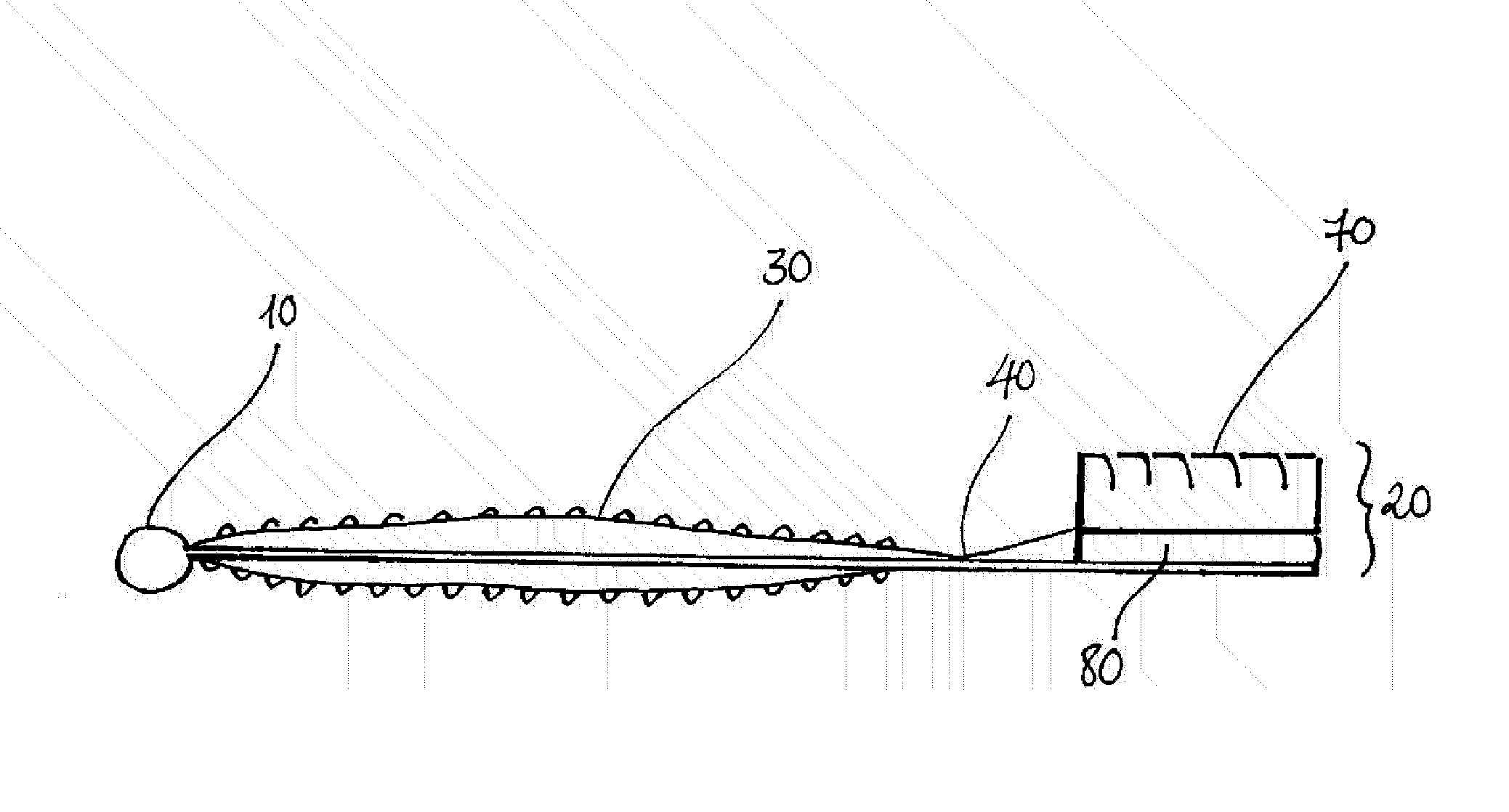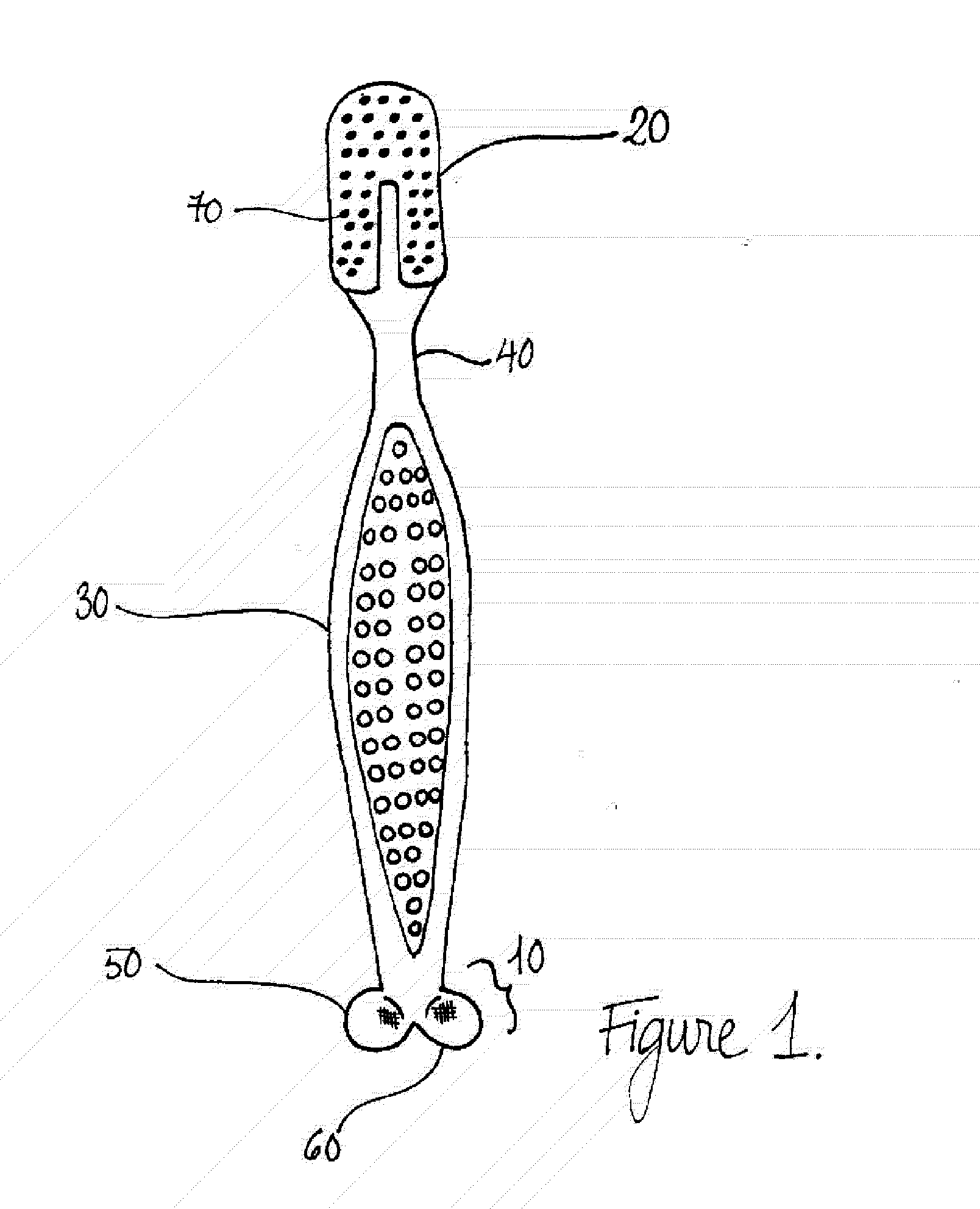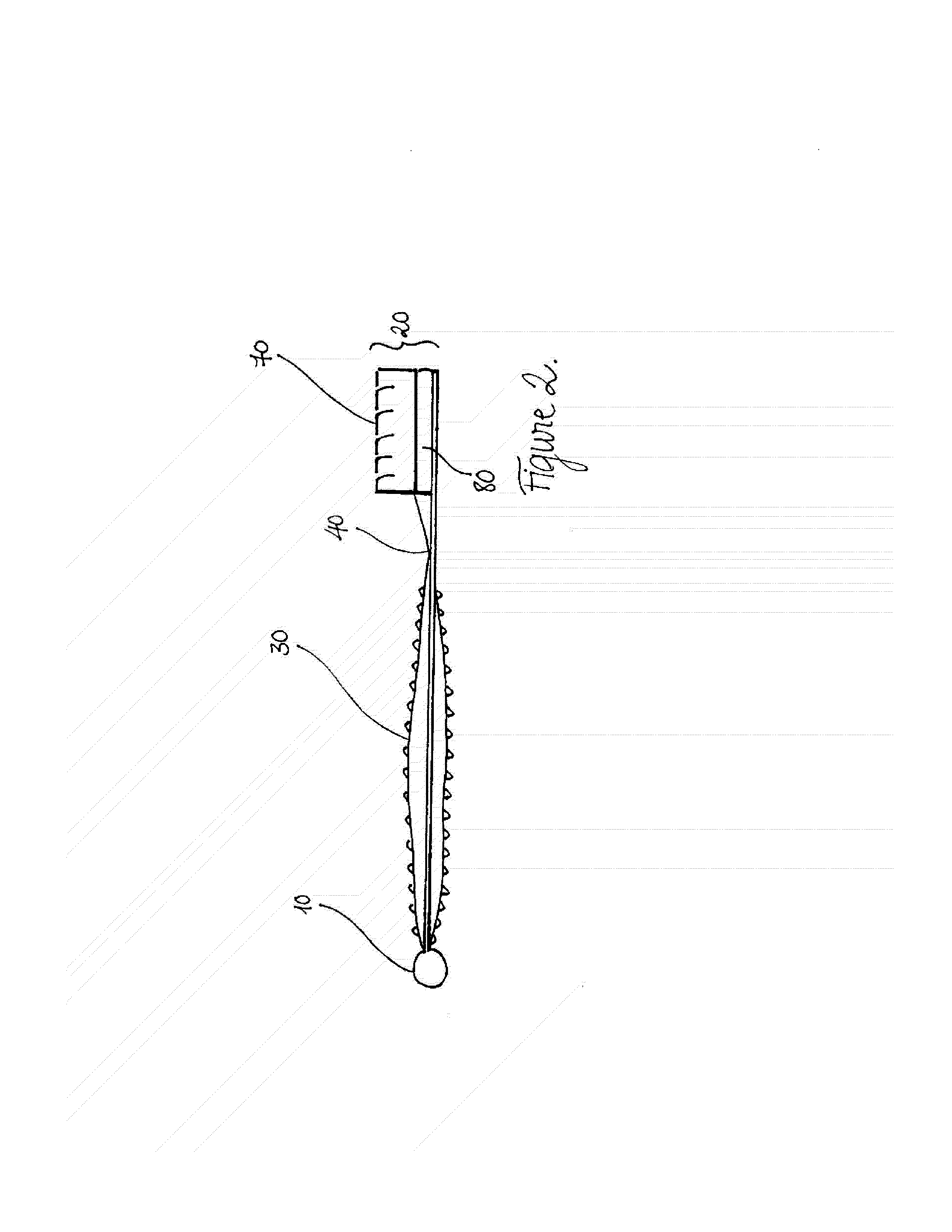Dog Toy Toothbrush
a toy toothbrush and dog technology, applied in the field of toy toothbrushes, can solve the problems of not having the dexterity, nor the fingers on hands, to be able to hold a toothbrush and actually brush their teeth, and the device of the shipp's device cannot allow a dog to work its gums, exercise its gums, and brush its teeth. the range of the bone that it imitates is very limited in the dog's mouth
- Summary
- Abstract
- Description
- Claims
- Application Information
AI Technical Summary
Benefits of technology
Problems solved by technology
Method used
Image
Examples
Embodiment Construction
[0022] As shown in FIG. 1, the present invention has a first end (10), a second end (20), a main body (30), and a neck portion (40). Thus, from one end to the other, the present invention has forced end (10) in communication with main body (30) in communication with neck portion (40) in communication with second end (20). First end (10) is made to resemble the end of a conventional dog bone. Thus, first end (10) has a first nub (50) and a second nub (60).
[0023] Second end (20) has bristles (70) disposed on backing (80). Bristles (70) are conventional bristles that one would find on a toothbrush and they can be formed in any conventional shape, such that as bristles (70), for example, are elongated as they move medial to the present invention and are shortened as they move lateral from the present invention. Also, as bristles (70) move lateral from the present invention, fewer bristles (70) can be disposed on backing (80), such that a point formation is formed at the end-most point ...
PUM
 Login to View More
Login to View More Abstract
Description
Claims
Application Information
 Login to View More
Login to View More - R&D
- Intellectual Property
- Life Sciences
- Materials
- Tech Scout
- Unparalleled Data Quality
- Higher Quality Content
- 60% Fewer Hallucinations
Browse by: Latest US Patents, China's latest patents, Technical Efficacy Thesaurus, Application Domain, Technology Topic, Popular Technical Reports.
© 2025 PatSnap. All rights reserved.Legal|Privacy policy|Modern Slavery Act Transparency Statement|Sitemap|About US| Contact US: help@patsnap.com



